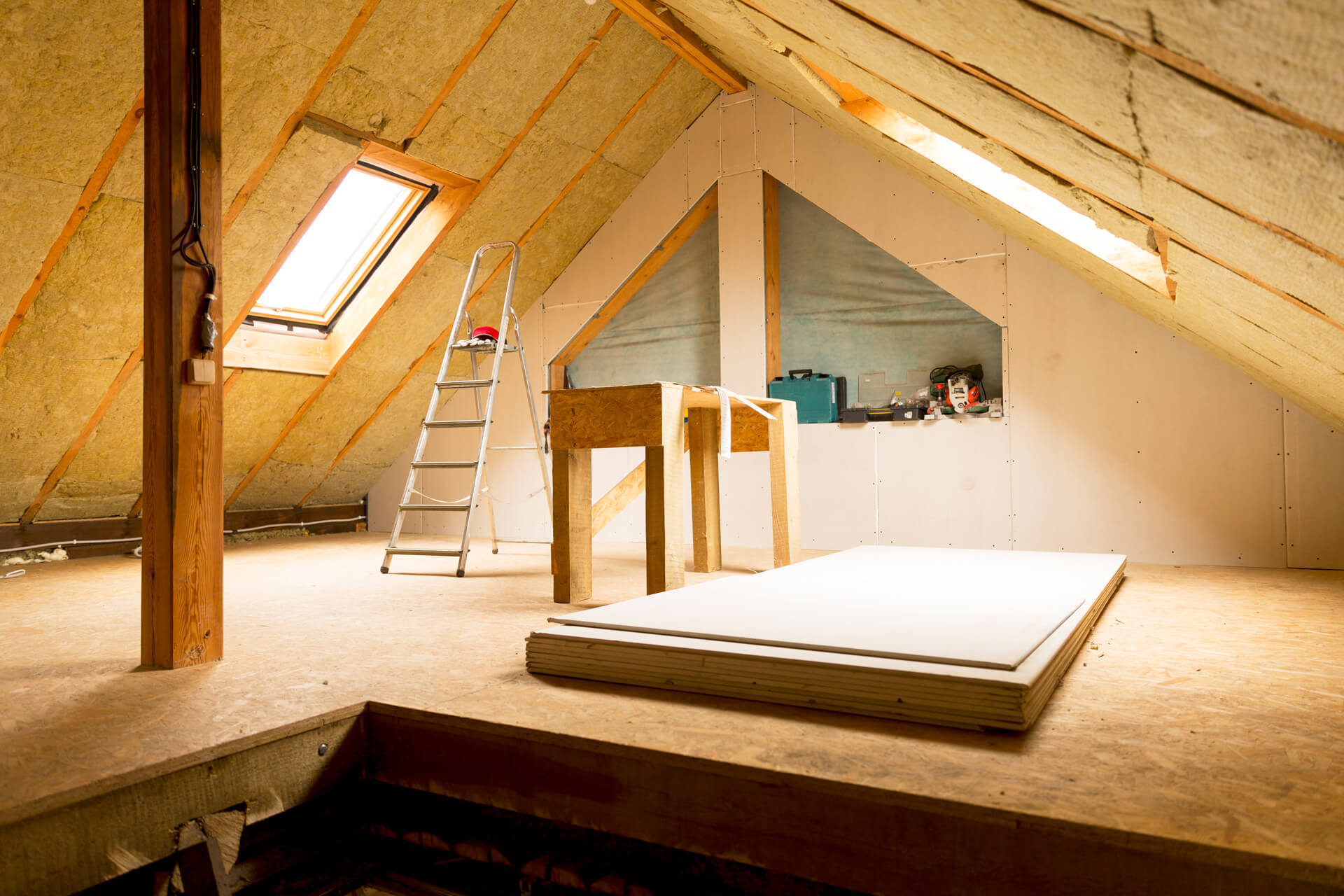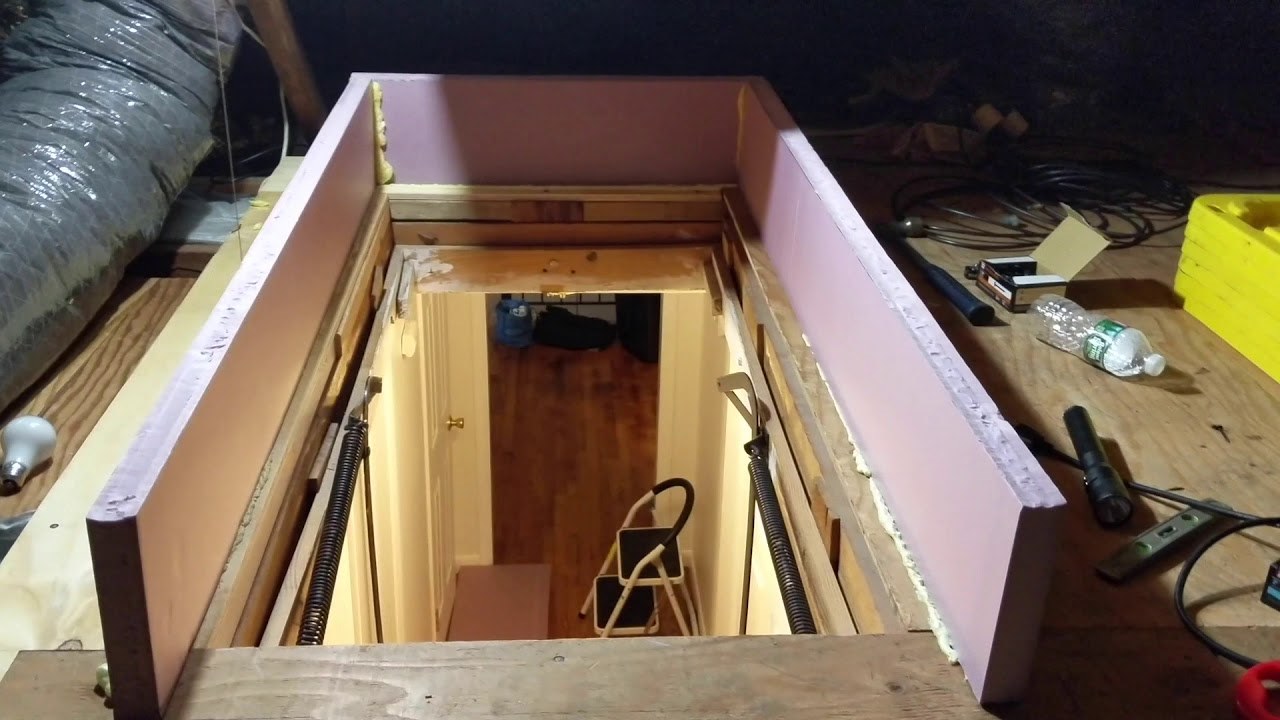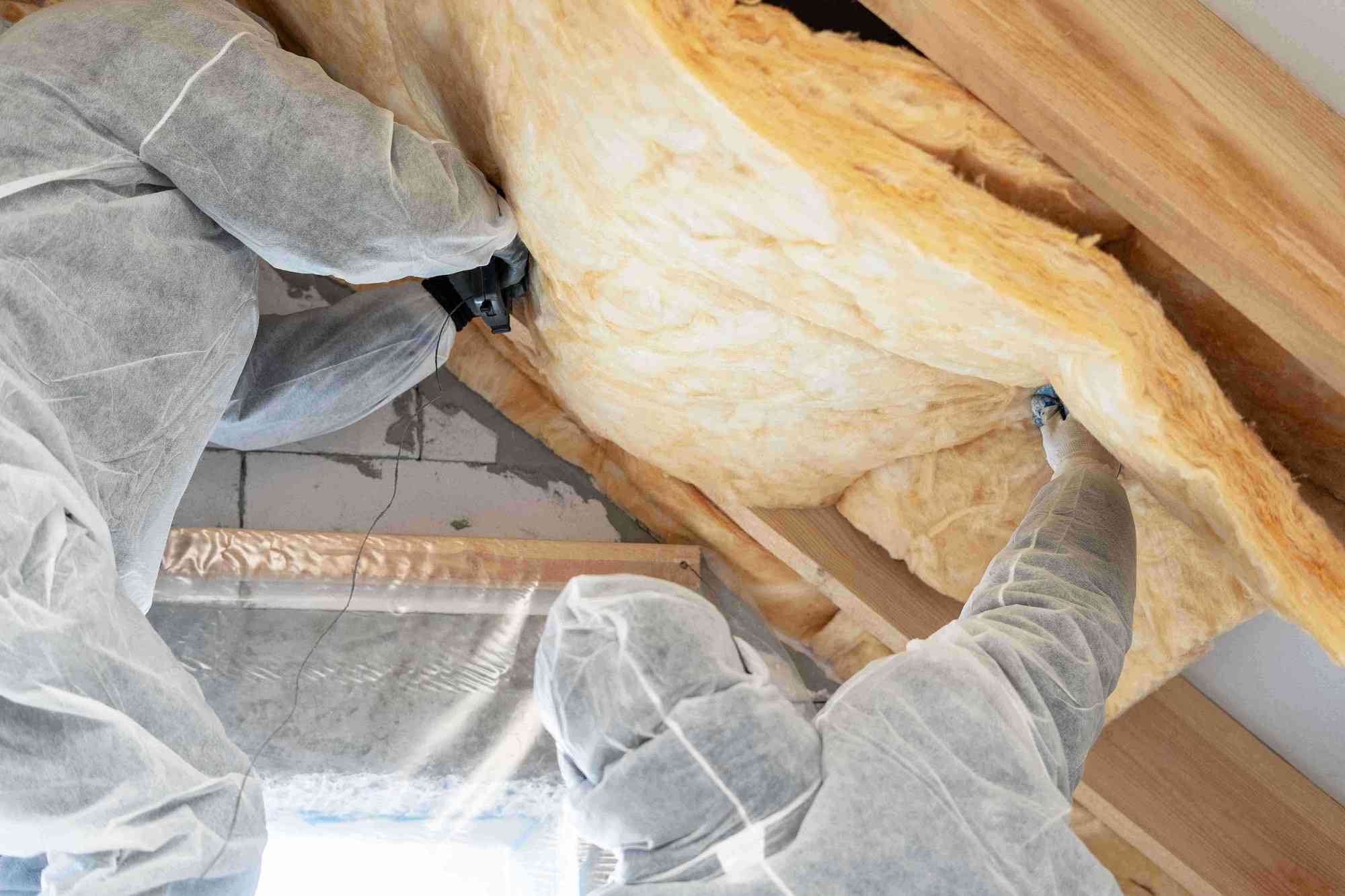

Articles
How To Insulate A Garage Attic
Modified: December 7, 2023
Learn how to properly insulate your garage attic with these informative articles. Improve energy efficiency and save money on heating and cooling costs.
(Many of the links in this article redirect to a specific reviewed product. Your purchase of these products through affiliate links helps to generate commission for Storables.com, at no extra cost. Learn more)
Introduction
Welcome to this comprehensive guide on how to insulate your garage attic. One of the often overlooked areas when it comes to home insulation is the garage attic. Many homeowners focus on insulating their living spaces but neglect to address the garage, which can result in energy loss, decreased comfort, and increased utility bills. Insulating your garage attic not only helps to regulate the temperature within the space but also prevents air leakage and provides soundproofing. In this article, we will explore the importance of insulating your garage attic, the types of insulation materials available, factors to consider before starting the project, and a step-by-step guide to properly insulate your garage attic.
Key Takeaways:
- Insulating your garage attic improves energy efficiency, comfort, and noise reduction, while also preventing moisture buildup and enhancing HVAC efficiency. It’s a wise investment for a more comfortable and sustainable home.
- Before insulating your garage attic, consider factors such as climate, R-value, air sealing, ventilation, existing insulation, and budget to optimize energy efficiency and comfort. Proper planning leads to effective insulation and long-term benefits.
Read more: How Important Is Attic Insulation
Purpose of Insulating Garage Attic
The garage attic is often a neglected space in terms of insulation, but insulating it can serve several important purposes. Let’s take a closer look at why insulating your garage attic is beneficial:
- Energy Efficiency: Insulating your garage attic helps to create a thermal barrier, preventing heat transfer between the attic and the rest of your home. This insulation barrier keeps the cool air inside during hot summer months and retains warmth during colder winter months. By reducing heat loss or gain, you can improve the energy efficiency of your entire home.
- Comfort: A properly insulated garage attic helps to maintain a more comfortable temperature in the space, making it more pleasant to work in and protecting stored items from extreme temperatures. Whether you use your garage for storing vehicles, as a workshop, or as an additional living space, insulation can greatly enhance comfort levels.
- Noise Reduction: Insulation also provides soundproofing benefits. If you use your garage for hobbies, such as woodworking or playing musical instruments, proper insulation in the garage attic can help reduce noise transmission to the surrounding areas of your home.
- Moisture Control: Insulating your garage attic can help prevent moisture infiltration, reducing the risk of mold and mildew growth. Moisture accumulation can occur in garages due to temperature variations and humidity, and insulation provides a barrier that minimizes condensation and potential damage to stored items.
- Improved HVAC Efficiency: If your HVAC system is located in the garage or if there are ducts running through the garage attic, insulating the space can help prevent energy loss from the ducts and promote more efficient cooling and heating within your home.
Overall, insulating your garage attic provides numerous benefits, including improved energy efficiency, enhanced comfort, noise reduction, moisture control, and better HVAC efficiency. Now that we understand the importance and advantages of insulating the garage attic, let’s explore the different types of insulation materials that can be used for this project.
Types of Insulation Materials
When it comes to insulating your garage attic, there are several different materials to choose from. The most common types of insulation materials used for garage attics include:
- Fiberglass Insulation: Fiberglass insulation is widely used and readily available. It consists of tiny glass fibers that are spun together to form a mat. This type of insulation is effective at reducing heat transfer and comes in a variety of forms, such as batts or rolls, which can be easily installed between joists and studs.
- Spray Foam Insulation: Spray foam insulation is a popular choice for garage attics as it provides excellent insulation and creates an air-sealed barrier. It is applied as a liquid and expands to fill gaps and cracks, creating a tight seal. Spray foam insulation is ideal for uneven surfaces and can improve energy efficiency by preventing air leakage.
- Cellulose Insulation: Cellulose insulation is made from recycled paper fibers treated with fire-resistant chemicals. It can be blown into garage attic spaces, filling gaps and creating a dense layer of insulation. Cellulose insulation is known for its excellent thermal performance and soundproofing qualities.
- Rigid Foam Insulation: Rigid foam insulation is made from polystyrene or polyisocyanurate and comes in rigid panels or boards. It provides high insulation value and is resistant to moisture, making it suitable for garage attics. Rigid foam insulation can be easily cut to fit and is commonly used in combination with other insulation materials.
- Reflective Insulation: Reflective insulation is a radiant barrier that reflects heat back towards its source. It typically consists of aluminum foil laminated onto a backing material. Reflective insulation is best used in hot climates to reduce radiant heat transfer. When installing reflective insulation, it is important to leave an air gap between the insulation and the roof sheathing for proper functionality.
When selecting the right insulation material for your garage attic, consider factors such as R-value (thermal resistance), moisture resistance, ease of installation, and your specific needs and budget. It is also important to follow manufacturer guidelines and local building codes when installing insulation materials.
Now that we have explored the types of insulation materials available for garage attics, let’s move on to discussing the factors to consider before starting your insulation project.
Consider using spray foam insulation to effectively insulate the garage attic. It can easily fill in gaps and provide a seamless barrier against heat transfer.
Factors to Consider Before Insulating Garage Attic
Before diving into your garage attic insulation project, there are several important factors to consider. Taking these factors into account will help ensure a successful and effective insulation job. Let’s explore these factors:
- Climate: The climate in which you live plays a significant role in determining the type and amount of insulation you will need. If you reside in a predominantly hot climate, you will need insulation that provides excellent heat resistance. Similarly, if you live in a cold climate, you will want insulation that effectively retains heat.
- R-Value: The R-value is a measure of an insulation material’s thermal resistance. It indicates how well the insulation resists the flow of heat. The higher the R-value, the better the insulation’s performance. Consider the recommended R-value for your region and the desired level of insulation for your garage attic.
- Access Points: Assess the accessibility of your garage attic. Determine how easily you can move around, as well as the accessibility of electrical wiring and other utilities. Ensure that you have sufficient space to work and install insulation properly.
- Air Sealing: Before insulating, it’s essential to inspect and address any air leaks or gaps in your garage attic. Air sealing helps prevent the transfer of air between the attic and the rest of your home, improving insulation efficiency. Seal any cracks, gaps around fixtures, and potential air leakage paths to maximize the effectiveness of your insulation.
- Ventilation: Check the ventilation in your garage attic. Proper ventilation is crucial for preventing excess moisture buildup and maintaining good air quality. Make sure the existing ventilation system is functioning correctly and clear any obstructions that may impede airflow.
- Existing Insulation: If your garage attic already has insulation, assess its condition before adding more. Determine whether the existing insulation is in good condition, free from moisture or mold, and still provides adequate insulation. It may be necessary to remove or replace old insulation, especially if it is damaged or ineffective.
- Budget: Consider your budget for the insulation project. Different insulation materials come with varying costs, so choose an option that fits within your budget constraints while still meeting the necessary insulation requirements.
Taking these factors into consideration will help you make informed decisions when insulating your garage attic. By understanding your climate, considering the desired R-value, addressing air leaks, ensuring proper ventilation, and working within your budget, you can optimize the insulation project for maximum energy efficiency and comfort.
Now that we have discussed the factors to consider, let’s move on to the step-by-step guide on how to insulate your garage attic effectively.
Steps to Insulate Garage Attic
Insulating your garage attic requires careful planning and execution. Here are the step-by-step guidelines to help you effectively insulate your garage attic:
- Assess the Attic: Begin by thoroughly inspecting your garage attic. Look for any existing insulation, check for air leaks, and identify areas that need insulation. Take measurements of the attic space to determine the amount of insulation material that you will require.
- Prepare the Attic: Clear out any stored items or debris in the garage attic before starting the insulation process. Ensure that the attic is clean and free from obstructions that may interfere with the installation process.
- Seal Air Leaks: Before installing insulation, seal any air leaks or gaps in the attic. Use caulk or foam sealant to seal gaps around fixtures, pipes, and vents. Insulate and weatherstrip the access door to prevent air leakage.
- Install Ventilation Chutes: If your garage attic has soffit vents, install ventilation chutes between the rafters to maintain proper airflow. These chutes will allow air to flow from the soffit vents to the attic space without the insulation blocking the vents.
- Choose the Insulation Material: Select the appropriate insulation material based on your climate, R-value requirements, and budget. Consider whether you want to use rolls, batts, or blown-in insulation. Follow the manufacturer’s instructions for proper installation.
- Install Insulation: Begin installing the insulation material in the garage attic. If using rolls or batts, carefully unroll or cut the insulation to fit between the joists and rafters. Ensure a snug fit without compressing the insulation. If using blown-in insulation, follow the manufacturer’s instructions for installation.
- Insulate Pipework and Ducts: Insulate any exposed pipework or ducts in the garage attic. This will help prevent heat loss or gain while maintaining the desired temperature inside the attic.
- Ensure Proper Ventilation: Make sure that the attic has adequate ventilation. Check that exhaust vents are clear and not obstructed. Ensure that the insulation does not block any vent openings or soffit vents.
- Close and Seal: Once the insulation is installed, close up and seal the garage attic. Replace any access panels or covers and seal them to prevent air leakage.
- Monitor and Maintain: Regularly inspect your garage attic to ensure the insulation is in good condition and performing effectively. Address any issues such as damage or moisture accumulation promptly to maintain the insulation’s efficiency.
By following these steps, you can properly insulate your garage attic and enjoy the benefits of improved energy efficiency, enhanced comfort, and reduced utility bills. Remember to take safety precautions when working in the attic, such as wearing protective gear and using proper insulation installation techniques.
Now that you have completed the insulation process, take a moment to appreciate the difference it will make in your garage attic’s temperature control and energy efficiency.
Read more: How To Insulate A Finished Attic
Conclusion
Insulating your garage attic is a wise investment that can significantly improve energy efficiency, increase comfort levels, and provide several other benefits. By creating a thermal barrier, insulating the garage attic helps regulate temperature, reduces energy loss, and prevents air leakage. This leads to energy savings, enhanced comfort, and even noise reduction.
When insulating your garage attic, consider factors such as the climate you live in, the desired R-value for insulation, the accessibility of the attic, and the existing insulation or ventilation systems. Select the right insulation material that fits your needs and budget, whether it be fiberglass, spray foam, cellulose, rigid foam, or reflective insulation.
Follow the step-by-step guide to ensure a proper and effective insulation installation. Assess the attic, seal any air leaks, install ventilation chutes if necessary, choose the insulation material, and install it carefully. Insulate pipework and ducts, and ensure proper ventilation. Close up and seal the attic to prevent air leakage, and regularly monitor and maintain the insulation to uphold its efficiency.
By insulating your garage attic, you improve energy efficiency, enhance comfort, reduce utility bills, and protect your stored belongings. Additionally, it contributes to a more sustainable and environmentally friendly home.
Now that you have the knowledge and steps to insulate your garage attic, it’s time to take action and start reaping the benefits. So go ahead, make your garage attic a comfortable and energy-efficient space.
Frequently Asked Questions about How To Insulate A Garage Attic
Was this page helpful?
At Storables.com, we guarantee accurate and reliable information. Our content, validated by Expert Board Contributors, is crafted following stringent Editorial Policies. We're committed to providing you with well-researched, expert-backed insights for all your informational needs.















0 thoughts on “How To Insulate A Garage Attic”